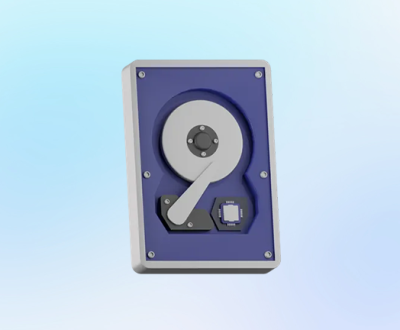Losing precious photos can be an emotional and frustrating experience, especially if they are irreplaceable memories captured on a memory card. Fortunately, there are effective methods to recover deleted photos from a memory card.
Memory Card Data Loss
Before diving into the recovery process, it is essential to understand how data loss occurs on memory cards. Common scenarios leading to photo deletion include:
Accidental Deletion: Users may accidentally delete photos while managing files on their memory cards.
Formatting the Memory Card: Formatting can erase all data on the card, including photos.
Corruption: Memory cards can become corrupted due to improper ejection, power failures, or exposure to physical damage.

Virus/Malware Attacks: Malicious software can corrupt files on the memory card, making them inaccessible.
Device Errors: Errors in the camera or device used with the memory card can lead to data loss.
Understanding these scenarios can help you take preventative measures to protect your files and improve your chances of successful recovery.
Preparing for Recovery
1. Stop Using the Memory Card
The first and most crucial step after realizing that photos have been deleted is to stop using the memory card immediately. Continuing to take new photos or transfer files can overwrite the deleted data, making recovery much more challenging, if not impossible.
2. Assess the Situation
Determine the extent of the data loss:
Have you accidentally deleted files, or was the card formatted?
Did the photos disappear due to corruption or device errors? Understanding the situation will help you choose the appropriate recovery method.
3. Choose a Recovery Method
There are several methods to recover deleted photos from a memory card, including:
Using Data Recovery Software
Manual Recovery Methods
Professional Data Recovery Services
This guide will focus primarily on software solutions, as they are the most accessible and cost-effective options for most users.
Using Data Recovery Software
Data recovery software is designed to scan storage devices for deleted files and restore them. Here’s a step-by-step guide on how to recover deleted photos from a memory card using data recovery software:
Step 1: Choose the Right Data Recovery Software
Panda Assistant is a powerful data recovery software designed to help users retrieve lost or deleted files from various storage devices, including hard drives, USB drives, and SD cards. With its intuitive interface, Panda Assistant makes the recovery process accessible to everyone, regardless of technical expertise.
Key Features:
User-Friendly Design: The software’s simple layout guides users through the recovery process with ease.
Versatile Recovery Options: Recover a wide range of file types, including photos, videos, and documents, whether due to accidental deletion, formatting, or corruption.
Advanced Scanning: The deep scan feature thoroughly examines storage devices to locate even the most challenging-to-recover files.
Preview Capability: Users can preview files before recovery, ensuring they retrieve exactly what they need.
Broad Device Support: Panda Assistant is compatible with various internal and external storage devices, making it a versatile tool for data recovery needs.
Step 2: Download and Install the Software
Download: Go to the official website of the chosen recovery software and download the installation file.
Install: Follow the installation instructions. For best results, install the software on a different drive than the memory card to avoid overwriting data.
Step 3: Connect the Memory Card to Your Computer
Use an SD card reader or connect your camera directly to the computer using a USB cable. Ensure the memory card is recognized by your system before proceeding.
Step 4: Launch the Data Recovery Software
Open the installed recovery software and select the memory card from the list of available drives. Most software will automatically detect connected devices.
Step 5: Choose the Recovery Mode
Most data recovery tools offer different recovery modes. For recovering deleted photos, choose one of the following options:
Quick Scan: This mode quickly searches for recently deleted files. It’s faster and may recover the majority of files.
Deep Scan: If the quick scan doesn’t yield satisfactory results, opt for the deep scan. This mode thoroughly scans the memory card, increasing the chances of recovering files that may not be easily accessible.
Step 6: Scan the Memory Card
Initiate the scanning process by clicking on the appropriate button (usually labeled “Scan” or “Recover”). The duration of the scan will vary based on the size of the memory card and the number of files.
Step 7: Preview and Select Recoverable Photos
Once the scan is complete, the software will display a list of recoverable files. Most recovery tools allow you to preview images before recovery. Look for your deleted photos, and select the ones you want to restore.
Step 8: Recover and Save the Photos
Click on the Recover button. The software will prompt you to select a destination for saving the recovered photos. Choose a location on your computer’s hard drive or an external storage device to avoid overwriting any remaining data on the memory card.
Step 9: Verify the Recovered Photos
After the recovery process is complete, navigate to the folder where you saved the recovered photos. Open the files to ensure they are intact and viewable.
Manual Recovery Methods
In some cases, you might not need specialized software to recover your photos. Here are some manual methods you can try:
1. Check the Recycle Bin (Windows)
If you deleted the photos while using a computer, check the Recycle Bin. If the deleted photos are present, you can easily restore them by right-clicking and selecting Restore.
2. Use File History (Windows)
If you have File History enabled on your Windows computer, you can recover deleted photos from previous backups. Here’s how:
Connect the memory card to your computer.
Navigate to the folder where the photos were stored.
Right-click the folder and select Restore previous versions.
Choose a version from the list and click Restore.
3. Use Time Machine (Mac)
If you are a Mac user and have enabled Time Machine, you can recover deleted photos from backups:
Connect the memory card to your Mac.
Open the folder where the photos were stored.
Click on the Time Machine icon in the menu bar and select Enter Time Machine.
Use the timeline on the right to locate the backup version with the deleted photos and click Restore.
4. Check Cloud Storage
If you regularly back up your photos to cloud storage services like Google Drive, Dropbox, or OneDrive, check your cloud accounts. You may find copies of your deleted photos stored there.
When to Seek Professional Data Recovery Services
If you have tried the above methods without success or if the memory card has sustained physical damage, it may be time to consider professional data recovery services. Here are signs that indicate you should seek professional help:
Severe Corruption: If the memory card is unreadable or you receive error messages, data recovery experts have specialized tools and techniques to retrieve files from damaged cards.
Physical Damage: If the card has been exposed to water, extreme temperatures, or physical impact, professional recovery services can safely attempt to recover the data without further damage.
Valuable or Irreplaceable Data: If the lost photos are highly valuable or cannot be replaced, professional services are your best bet to maximize recovery chances.
Choosing a Data Recovery Service
When selecting a data recovery service, consider the following:
Reputation: Look for reviews and testimonials from previous clients.
Experience: Ensure the service specializes in memory card recovery.
Cost: Request a quote and inquire about any additional fees.
Success Rate: Ask about their success rate in recovering lost data from similar scenarios.
Best Practices for Preventing Future Data Loss
While recovery methods are helpful, taking preventive measures can save you from future data loss. Here are some best practices to keep your photos safe:
1. Regular Backups
Regularly back up your photos to multiple locations, such as external hard drives, cloud storage, or computers. This redundancy ensures that you always have access to your files, even if one storage medium fails.
2. Properly Eject the Memory Card
Always safely eject the memory card from your device to prevent corruption. On Windows, use the “Safely Remove Hardware” option; on Mac, drag the card to the trash or click the eject icon.
3. Format the Card in the Camera
If you need to format your memory card, do so using the camera or device that you will primarily use it with. This helps ensure compatibility and reduces the risk of corruption.
4. Avoid Filling the Card to Capacity
Keeping your memory card at less than 90% capacity reduces the likelihood of file corruption and data loss. Regularly transfer files to your computer and free up space.
5. Use Quality Memory Cards
Invest in high-quality memory cards from reputable brands. Cheap or counterfeit cards are more likely to fail or become corrupted.
6. Maintain Physical Care
Handle memory cards with care. Avoid exposing them to extreme temperatures, moisture, or physical stress. Use a protective case when transporting them.
7. Regularly Update Firmware
Keep your camera or device firmware up to date. Firmware updates can fix bugs and improve device performance, reducing the risk of data loss.
About us and this blog
Panda Assistant is built on the latest data recovery algorithms, ensuring that no file is too damaged, too lost, or too corrupted to be recovered.
Request a free quote
We believe that data recovery shouldn’t be a daunting task. That’s why we’ve designed Panda Assistant to be as easy to use as it is powerful. With a few clicks, you can initiate a scan, preview recoverable files, and restore your data all within a matter of minutes.
Subscribe to our newsletter!
More from our blog
See all postsRecent Posts
- How to recover deleted word document 2025-07-09
- How to recover deleted photos on sd memory card 2025-07-09
- How to recover completely deleted files 2025-07-09

 Try lt Free
Try lt Free Recovery success rate of up to
Recovery success rate of up to









